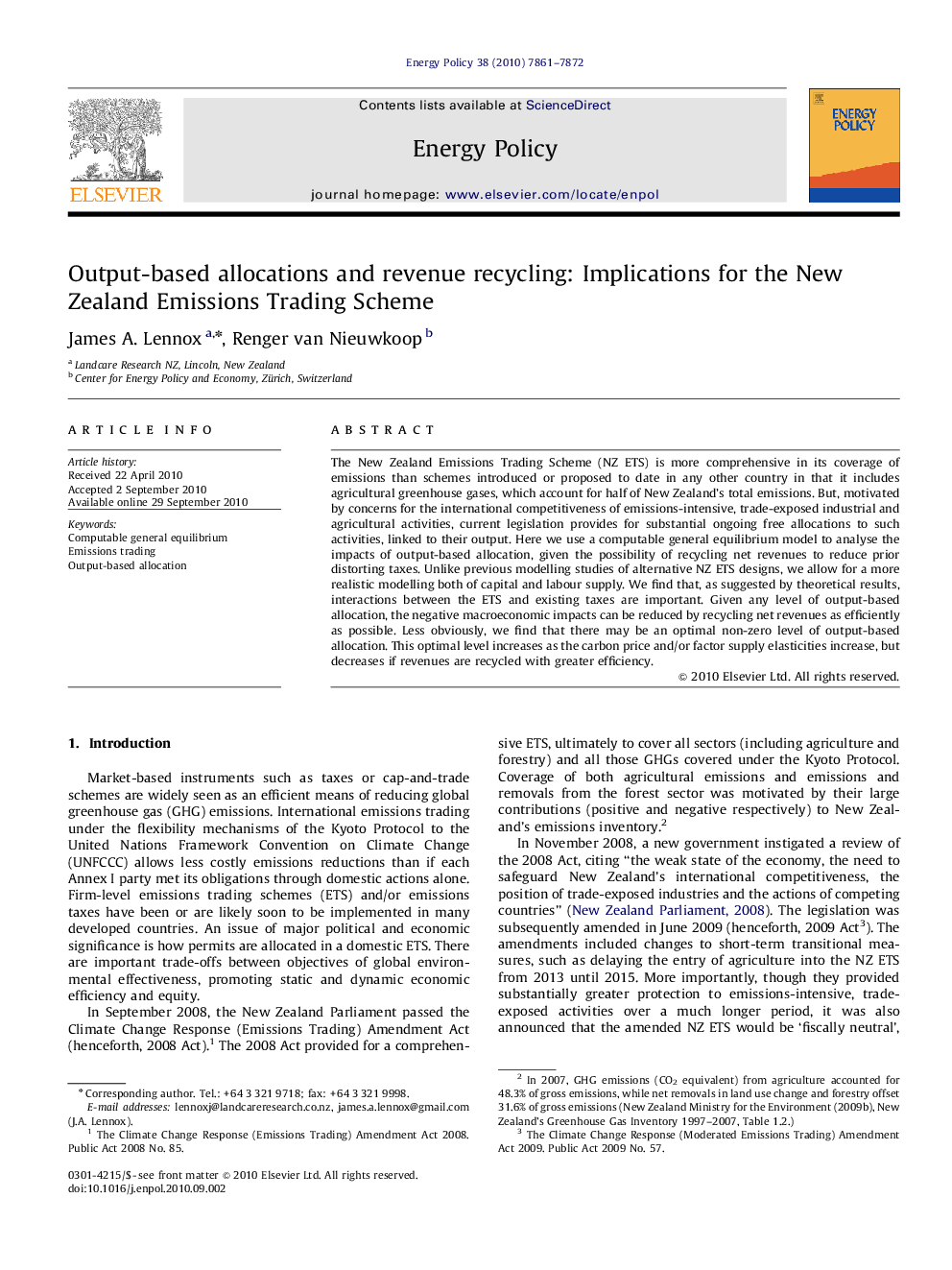| Article ID | Journal | Published Year | Pages | File Type |
|---|---|---|---|---|
| 996204 | Energy Policy | 2010 | 12 Pages |
The New Zealand Emissions Trading Scheme (NZ ETS) is more comprehensive in its coverage of emissions than schemes introduced or proposed to date in any other country in that it includes agricultural greenhouse gases, which account for half of New Zealand’s total emissions. But, motivated by concerns for the international competitiveness of emissions-intensive, trade-exposed industrial and agricultural activities, current legislation provides for substantial ongoing free allocations to such activities, linked to their output. Here we use a computable general equilibrium model to analyse the impacts of output-based allocation, given the possibility of recycling net revenues to reduce prior distorting taxes. Unlike previous modelling studies of alternative NZ ETS designs, we allow for a more realistic modelling both of capital and labour supply. We find that, as suggested by theoretical results, interactions between the ETS and existing taxes are important. Given any level of output-based allocation, the negative macroeconomic impacts can be reduced by recycling net revenues as efficiently as possible. Less obviously, we find that there may be an optimal non-zero level of output-based allocation. This optimal level increases as the carbon price and/or factor supply elasticities increase, but decreases if revenues are recycled with greater efficiency.
Research highlights►The current New Zealand emissions trading scheme could be made less costly. ►Recycling revenues to reduce distorting income taxes reduces macroeconomic costs. ►With high (exogenous) carbon prices, output-based allocation may also reduce costs. ►Efficient revenue recycling lowers optimal rates of output-based allocation. ►Optimal rates are parameter-dependent, but are much lower than legislated levels.
